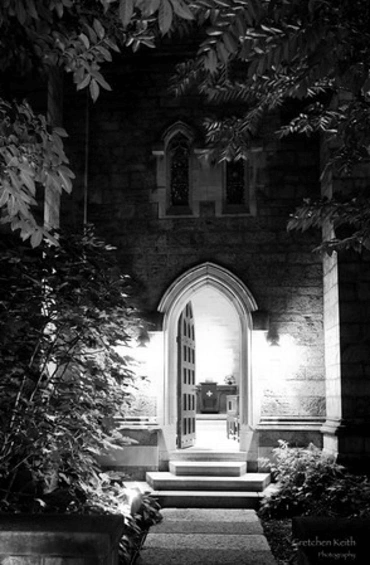1
Und ich sah: Und siehe, auf der Ausdehnung (S. d. Anm. zu Kap. 1,22,) die über dem Haupte der Cherubim war, war es wie ein Saphirstein, wie das Aussehen der Gestalt eines Thrones, der über ihnen erschien.
2
Und er sprach zu dem in Linnen gekleideten Manne und sagte: Gehe hinein zwischen den
äderwirbel unterhalb des Cherubs (Der Ausdruck "Cherub" oder das "das lebendige Wesen" (v 15) bezeichnet die gesamte Erscheinung der Cherubim; s. die Anm. zu Kap. 1,9,) und fülle deine Hände mit Feuerkohlen von dem
aume (Eig. von heraus) zwischen den Cherubim, und streue sie über die Stadt hin. Und er ging vor meinen Augen hinein.
3
Die Cherubim aber standen zur rechten Seite des Hauses, als der Mann hineinging; und die Wolke erfüllte den inneren Vorhof.
4
Und die Herrlichkeit Jehovas hatte sich von dem Cherub auf die Schwelle des Hauses hin erhoben; und das Haus war von der Wolke erfüllt, und der Vorhof war voll von dem Glanze der Herrlichkeit Jehovas.
5
Und das
auschen der Flügel der Cherubim wurde bis in den äußeren Vorhof gehört wie die Stimme Gottes (El,) des Allmächtigen, wenn er redet.
6
Und es geschah, als er dem in Linnen gekleideten Manne gebot und sprach: Nimm Feuer zwischen dem
äderwirbel, zwischen den Cherubim weg, und er hineinging und zur Seite des
ades trat,
7
da streckte ein Cherub seine Hand zwischen den Cherubim hervor, zu dem Feuer hin, welches zwischen den Cherubim war, und hob es ab und gab es in die Hände dessen, der in Linnen gekleidet war; der nahm es und ging hinaus.
8
Und es erschien an den Cherubim das Gebilde einer Menschenhand unter ihren Flügeln. -
9
Und ich sah: und siehe, vier
äder waren neben den Cherubim, je ein
ad neben je einem Cherub. Und das Aussehen der
äder war wie der Anblick eines Chrysolithsteines;
10
und ihr Aussehen: die vier hatten einerlei Gestalt, wie wenn ein
ad inmitten eines
ades wäre.
11
Wenn sie gingen, so gingen sie nach ihren vier Seiten hin: Sie wandten sich nicht, wenn sie gingen; denn nach dem Orte, wohin das Vorderteil gerichtet war, folgten sie demselben: sie wandten sich nicht, wenn sie gingen.
12
Und ihr ganzer Leib und ihr
ücken und ihre Hände und ihre Flügel und die
äder waren voll Augen ringsum; alle vier hatten ihre
äder.
13
Die
äder, sie wurden vor meinen Ohren "Wirbel" genannt.
14
Und ein jedes hatte vier Angesichter; das Angesicht (nämlich das dem Propheten zugekehrte) des ersten war das Angesicht eines Cherubs, und das Angesicht des zweiten das Angesicht eines Menschen, und des dritten das Angesicht eines Löwen, und des vierten das Angesicht eines Adlers.
15
Und die Cherubim hoben sich empor. Das war das lebendige Wesen, welches ich am Flusse Kebar gesehen hatte.
16
Und wenn die Cherubim gingen, so gingen die
äder neben ihnen; und wenn die Cherubim ihre Flügel erhoben, um sich von der Erde emporzuheben, so wandten sich die
äder auch nicht von ihrer Seite.
17
Wenn sie stehen blieben, blieben auch sie stehen; und wenn sie sich emporhoben, hoben sie sich mit ihnen empor; denn der Geist des lebendigen Wesens war in ihnen. -
18
Und die Herrlichkeit Jehovas begab sich von der Schwelle des Hauses hinweg und stellte sich über die Cherubim.
19
Und die Cherubim erhoben ihre Flügel und hoben sich vor meinen Augen von der Erde empor, als sie sich hinwegbegaben; und die
äder waren neben ihnen (S. die Anm. zu Kap. 1,20.) Und sie stellten sich an den Eingang des östlichen Tores des Hauses Jehovas, und die Herrlichkeit des Gottes Israels war oben über ihnen.
20
Das war das lebendige Wesen, welches ich unter dem Gott Israels am Flusse Kebar gesehen hatte; und ich erkannte, daß es Cherubim waren.
21
Jeder hatte vier Angesichter, und jeder hatte vier Flügel, und das Gebilde von Menschenhänden war unter ihren Flügeln.
22
Und was die Gestalt ihrer Angesichter betrifft, so waren es die Angesichter, welche ich am Flusse Kebar gesehen hatte, ihr Aussehen und sie selbst. Sie gingen ein jeder stracks vor sich hin.







